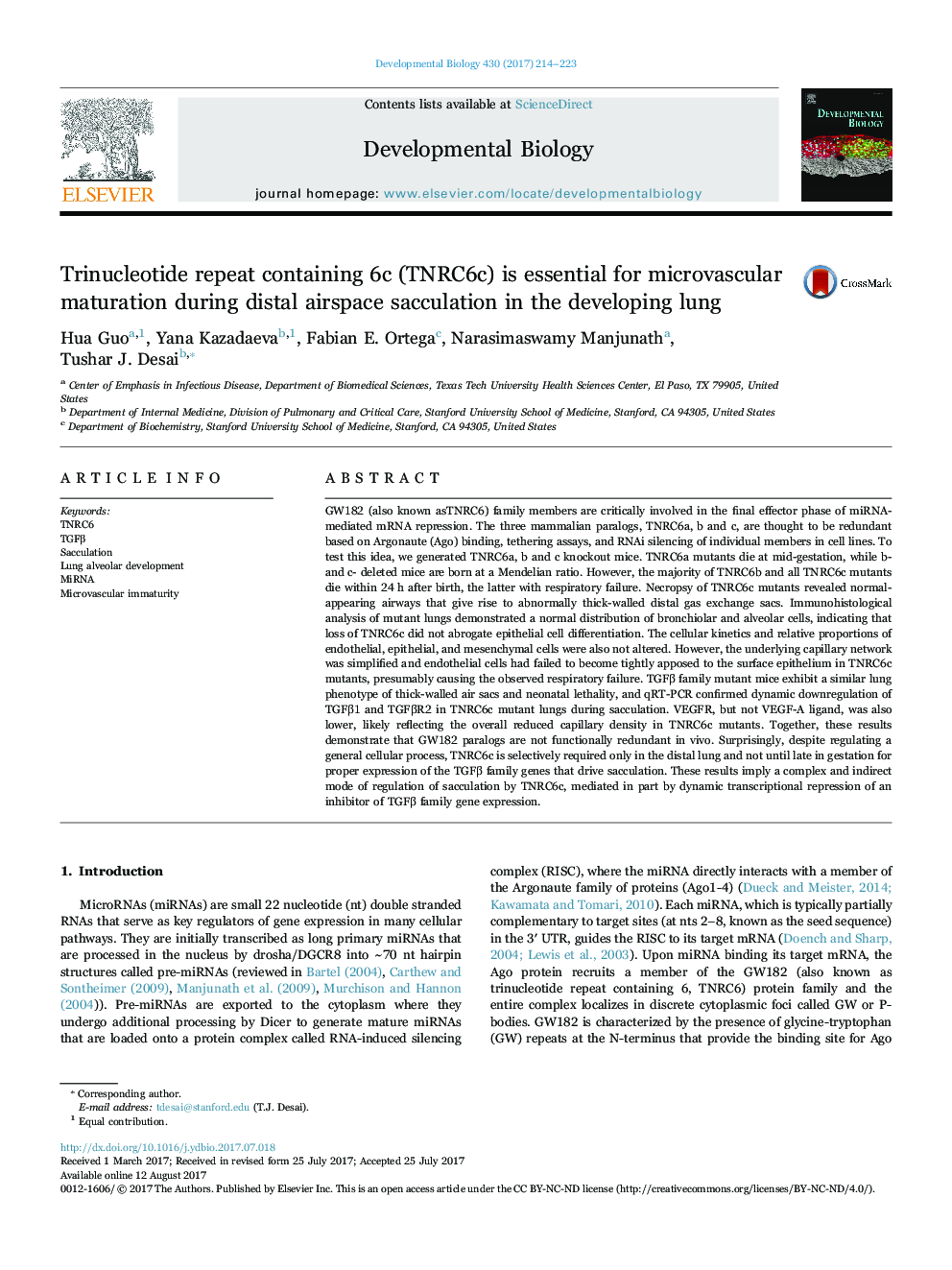| کد مقاله | کد نشریه | سال انتشار | مقاله انگلیسی | نسخه تمام متن |
|---|---|---|---|---|
| 5531829 | 1401816 | 2017 | 10 صفحه PDF | دانلود رایگان |

- TNRC6a, -b, and -c null mutant mice have distinct phenotypes.
- TNRC6c mutant lungs have small gas exchange sacs and die of respiratory failure.
- Air sac epithelium is normal but mesenchyme thick and microvasculature immature.
- Lung capillaries fail to properly appose to the overlying gas exchange epithelium.
- TGFβ family genes are dynamically reduced in mutant lungs during sacculation.
GW182 (also known asTNRC6) family members are critically involved in the final effector phase of miRNA-mediated mRNA repression. The three mammalian paralogs, TNRC6a, b and c, are thought to be redundant based on Argonaute (Ago) binding, tethering assays, and RNAi silencing of individual members in cell lines. To test this idea, we generated TNRC6a, b and c knockout mice. TNRC6a mutants die at mid-gestation, while b- and c- deleted mice are born at a Mendelian ratio. However, the majority of TNRC6b and all TNRC6c mutants die within 24 h after birth, the latter with respiratory failure. Necropsy of TNRC6c mutants revealed normal-appearing airways that give rise to abnormally thick-walled distal gas exchange sacs. Immunohistological analysis of mutant lungs demonstrated a normal distribution of bronchiolar and alveolar cells, indicating that loss of TNRC6c did not abrogate epithelial cell differentiation. The cellular kinetics and relative proportions of endothelial, epithelial, and mesenchymal cells were also not altered. However, the underlying capillary network was simplified and endothelial cells had failed to become tightly apposed to the surface epithelium in TNRC6c mutants, presumably causing the observed respiratory failure. TGFβ family mutant mice exhibit a similar lung phenotype of thick-walled air sacs and neonatal lethality, and qRT-PCR confirmed dynamic downregulation of TGFβ1 and TGFβR2 in TNRC6c mutant lungs during sacculation. VEGFR, but not VEGF-A ligand, was also lower, likely reflecting the overall reduced capillary density in TNRC6c mutants. Together, these results demonstrate that GW182 paralogs are not functionally redundant in vivo. Surprisingly, despite regulating a general cellular process, TNRC6c is selectively required only in the distal lung and not until late in gestation for proper expression of the TGFβ family genes that drive sacculation. These results imply a complex and indirect mode of regulation of sacculation by TNRC6c, mediated in part by dynamic transcriptional repression of an inhibitor of TGFβ family gene expression.
Journal: Developmental Biology - Volume 430, Issue 1, 1 October 2017, Pages 214-223